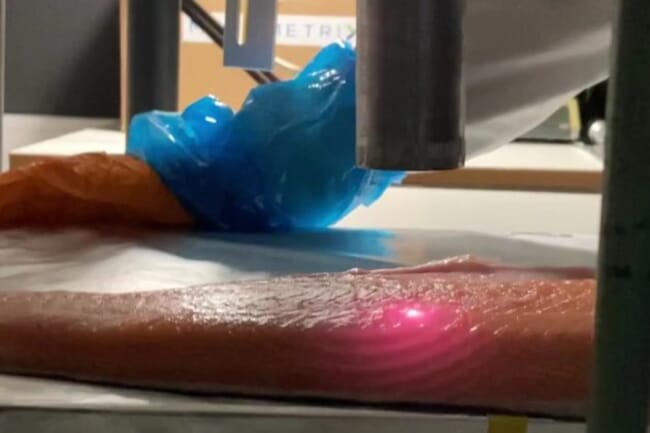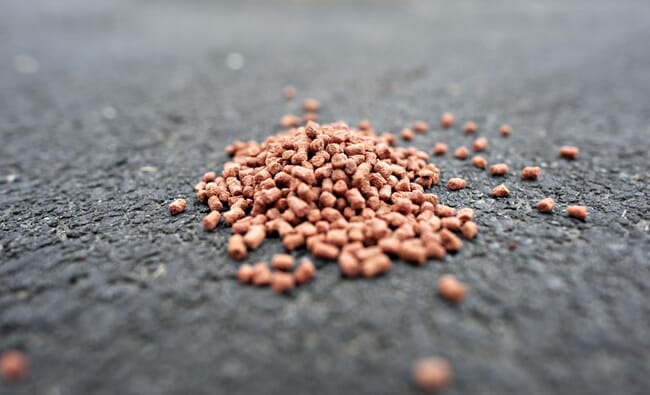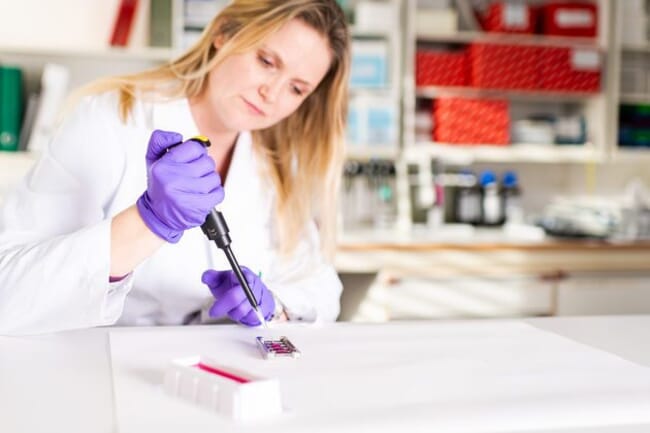
Here, the salmon fillet moves over the conveyor belt at the same time as the fatty acid composition is measured © Tiril Aurora Lintvedt
According to a news release from the company, consuming DHA and EPA fatty acids comes with numerous positive health impacts and is associated with lower risks of cardiovascular disease. Norwegian farmed salmon is a good source of these marine fatty acids EPA and DHA despite the recent fatty acid decrease in fillets. Much of this decrease is due to reducing the proportion of marine proteins and oils in aquafeed and increasing the concentration of plant proteins and oils. The researchers note that though this has decrease the fish-in-fish-out (FIFO) ratios of farmed salmon, the salmon must have sufficient EPA and DHA in their feed to remain healthy.
Why measuring fatty acids matters
There are several reasons why such measurements are useful:
- The industry can document the effect of feed and feed ingredients on the level of EPA and DHA in fish fillets
- This is an important quality characteristic that can be documented in the market and to consumers
- EPA and DHA are important markers in breeding and genetics. Many research projects within the fields of feed, nutrition and fish health require such measurements

Measuring the fatty acid levels in fish fillets will give the industry a better understanding of the impacts certain feed ingredients have on finishing quality and nutrition © Jon Are Berg Jacobsen, Nofima
Current measurement methods are costly and time-consuming
Currently, chromatography must be used to measure specific fatty acids. This process is both costly and time-consuming. Chromatography can only be performed in specific laboratories and one measurement costs NOK 1,500 (€143) or more.
In recent years, Nofima has worked to develop a rapid and non-destructive method for measuring the proportion of EPA and DHA fatty acids in salmon fat. The method can be used on whole salmon fillets without physically touching them and the measurement only takes a few seconds per fillet.
The two techniques studied are called Raman spectroscopy and near-infrared (NIR) spectroscopy.
Raman spectroscopy produced promising results
In just a matter of seconds, this technique can quantify a number of components in the fat, including EPA and DHA. This is done by a laser illuminating the salmon fillet, which can then be scanned quickly without any kind of physical contact.
Nofima has tested the method on salmon from a number of different locations and feeding regimes, and it turns out to be very accurate. EPA+DHA can be measured with an accuracy of approximately ± 0.5 percent of total fat. The typical variation range for EPA+DHA in salmon is 4-12 percent of total fat. As of today, the method is excellent at making rapid measurements in a laboratory or next to the line in a production facility. In the slightly longer term, Nofima believes that Raman can also be put directly on the production line and measure each and every salmon fillet, but this might require robotic controlled measurements.
Relevant Raman measurement systems currently cost approximately NOK 700,000 (€66,700). This cost must be assessed in relation to the opportunities it can provide regarding effective quality documentation and possible quality differentiation.
Raman has mostly been used in laboratories or next to the production line. In the DigiFoods research centre, Nofima is developing the technology so that it can be used for continuous measurements of food directly on the production lines. The company has reported promising results thus far and believes that the methodology will help the food industry ensure consistent quality and less waste in their processes. Nofima is also collaborating with geneticists to find out whether the methodology can be used directly in breeding work to select fish with the desired fat composition.

Nofima is developing the technology so that it can be used for continuous measurements of food directly on the production lines © Joe Urrutia, Nofima
NIR imaging spectroscopy
NIR imaging (hyperspectral) spectroscopy is already being used by the food industry to make in-line measurements. The method is used for measuring parameters such as fat in salmon fillets, fat in meat, protein in chicken fillets as well as residual blood in whole white fish and salmon fillets.
NIR imaging is very good at measuring total fat content, but there has been more uncertainty as to whether it can also be used for specific fatty acids such as EPA and DHA.
The studies show that the method is not as accurate as Raman, but good estimates are also obtained using this technique. One advantage of using NIR imaging is that the technology is faster than Raman and very suitable for taking measurements directly at production lines.




